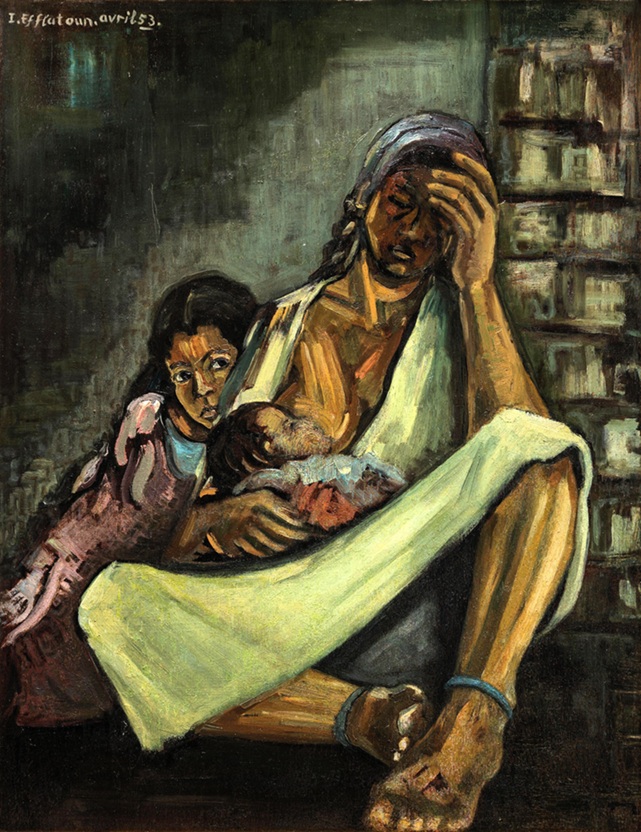Omar El-Nagdi (1931 - 2019
Untitled (Surat Yasin), c. 2008
Mixed media on canvas
150 by 150 cm. 59 by 59 in.
Private collection
Estimate for 60,000 - 80,000 GBP in Oct 2025
Nagdi's works can be found in the United States' Congress Library, Washington DC; the Museum of Modern Art, Venice; the National Library, Paris; the Museum of Modern Art, Cairo; the Museum of Fine Art, Alexandria; and the Museum of Modern Art, South Korea. He has exhibited internationally, notably at a solo show at the Institut du Monde Arabe in 1995, and has received awards at three Alexandria Biennales (1999, 1996, and 1974).
Omar El-Nagdi was an Egyptian artist renowned for his contributions to abstract expressionism and cubism. Born in 1931 in Cairo, he had a prolific career that spanned several decades, gaining recognition both locally and internationally. El-Nagdi passed away in 2019.
A graduate of the Faculty of Fine Arts at Helwan University, El-Nagdi earned first-class honors in 1953. His early career saw him win several prestigious awards, including first prize at the Technical Production Exhibition in 1955 and the Cairo Fine Arts competition in 1952. His formative years also included studies abroad, such as ceramics in Russia and higher education at the Venice Academy of Fine Arts in Italy, where he studied under Professor Bruno Saetti. El-Nagdi's work was influenced by various mediums, including painting, sculpture, etching, and mosaic art, with a particular focus on silk-screen printing and graphic arts.
El-Nagdi’s caeer was marked by numerous exhibitions at notable venues worldwide. He participated in the Venice Biennale, Alexandria Biennale, and the Kuwait Biennale, receiving accolades for his innovative use of color and form. His work was exhibited in solo shows in cities including Cairo, Paris, Riyadh, and Beirut, and his art was featured in major galleries such as the Al-Ahram Gallery in Cairo and the Danielle Bourdette Gallery in Honfleur, France. He was also part of several international group exhibitions in cities like London, Maastricht, and Venice.
In addition to his artistic practice, El-Nagdi made significant contributions to the field of art education. He served as a visiting professor at King Saud University in Riyadh and was a member of various artistic organizations, including the Fine Art Friends Association and the Egyptian Television Program Committee. As a TV director, he produced numerous documentaries and directed more than 30 films, composing music for several songs.
El-Nagdi’s legacy extends beyond his work as a visual artist; he also wrote books on design and Egyptian art, such as Alphabetic Design and the Description of Egypt Series. His influence continues to be felt in the world of contemporary Egyptian art. More on Omar El-Nagdi
Please visit my other blogs: Art Collector, Mythology, Marine Art, Portrait of a Lady, The Orientalist, Art of the Nude and The Canals of Venice, Middle East Artists, 365 Saints, 365 Days, and Biblical Icons, also visit my Boards on Pinterest and my art stores at deviantart and Aaroko
Images are copyright of their respective
owners, assignees or others. Some Images may be subject to copyright
I don't own any of these images - credit is
always given when due unless it is unknown to me. if I post your images without
your permission, please tell me.
Ads are shown only to compensate the hosting
expenses.
If you enjoyed this post, please share with
friends and family.
Thank you for visiting my blog and also for
liking its posts and pages.
Please note that the content of this post
primarily consists of articles available from Wikipedia or other free sources
online.







.jpeg)


.jpg)


